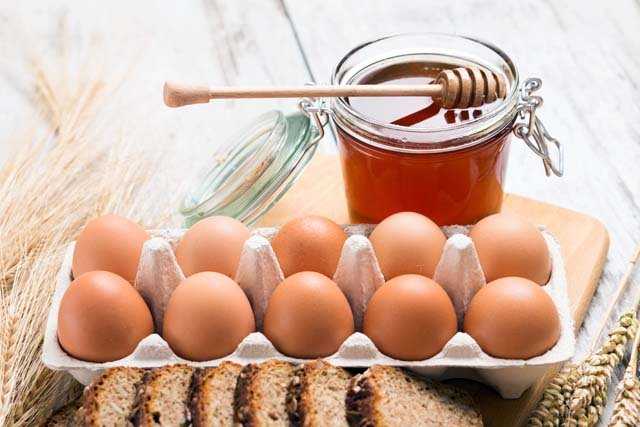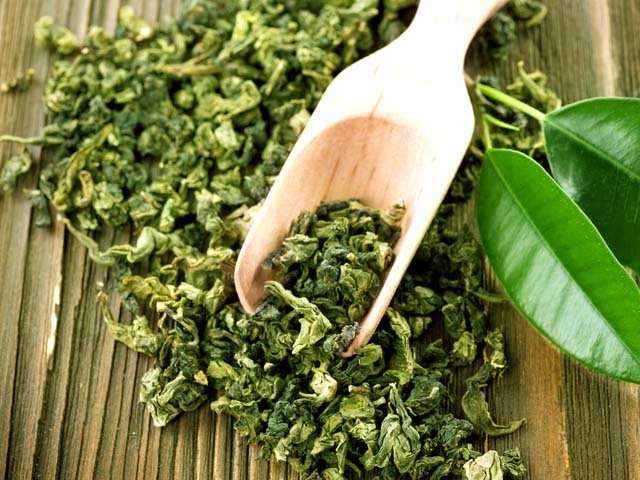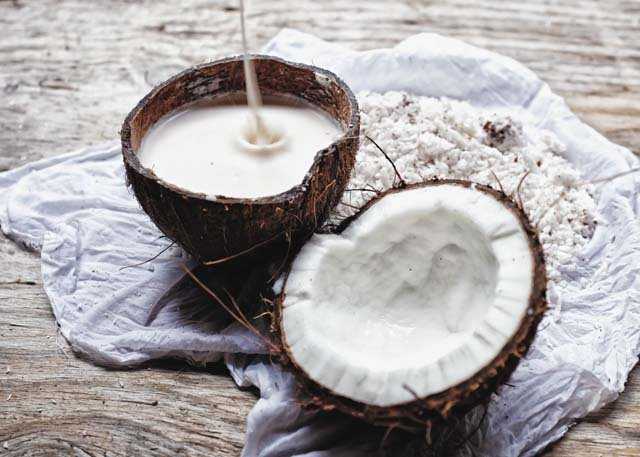How To Get Rid Of Dry Hair

If you run your hands through your hair only to feel frizzy, coarse strands with a texture indistinguishable from straw, you're painfully familiar with the reality of living with dry hair. While in reality hair never quite shines and bounces like it does in shampoo commercials, there is a lot you can do to get pretty close to the fantasy.
1. What causes dry hair?
2. Home remedies for dry hair
3. Other fixes you can make every day
4. FAQs on Dry Hair
What causes dry hair?
Dryness can be caused by several factors. It's important to know why your hair is the way it is before you can treat it. First things first, understand nature's own hair conditioner – sebum. Sebum is an oil produced by glands under your skin, from where it's channeled onto your hair follicle, slowly making its way from root to tip. So if conditioning is an inbuilt function, why is your hair still dry? Read on.

It's in the genes
Sometimes you just have mom and dad to blame for the fact that your body produces less sebum that it needs. Dietary changes and simple home remedies (look below) can help a great deal if a genetic predisposition is your only problem.
You are what you eat
A diet lacking in essential fatty acids like omega-3 (found in fish like salmon and mackerel, flaxseeds and walnuts) will show in your hair health. Other rich sources of healthy fats include avocados, salmon, and olive oil. Since your hair is composed predominantly of protein, foods like beans, eggs, cottage cheese, shrimp, oysters, almonds and walnuts encourage healthy hair growth. Including a large variety of fresh fruits and vegetables in your diet will meet your nutrient needs, ultimately benefiting hair, skin and overall wellness.
Your shampoo is your enemy
Shampoos do a good job of branding themselves as all things nice, but look past generic catchphrases and learn to read ingredient labels while making your choice. Shampoos often contain ammonium lauryl sulphate or sodium laureth sulphate – both powerful cleansers that are just as powerful at stripping your hair of natural oils. While oil-enriched shampoos might sound like a good idea, mineral oils, lanolin and petrolatum seal your hair off from absorbing moisture. You're better off using products with natural oils like olive, coconut, tea tree, hemp seed and jojoba. Silk and milk proteins are an added bonus.
How much is too much?
You might love the feeling of clean, washed hair, but washing every day is doing you no favours. Shampooing washes out natural oils along with dirt, so the sebum your scalp produces might never even make it to your tips (which is why ends are often the worst affected by dryness). Washing twice to thrice a week is ideal, and never skip conditioning. Use cold, or at least cool water to rinse your hair.
Styling = drying
It's tempting to turn to your trusty iron to enhance your hair's texture, but heat styling is a double edged sword. Flat irons and blow dries are temporary fixes that make your hair spiral further down the road of damage. It's best to do away with heat styling for good, but if you must, add a heat protection serum or spray to your routine. The same goes for chemical treatments and dyes. Use products meant to be used on coloured or treated hair to make sure your hair gets the nourishment it needs.
Weather woes
Some things are simply beyond your control. The sun shines down on you, smoke blows through your mane, and humidity-season makes your hair a fortress of frizz. Using hats and scarfs to cover your hair during period of sun-exposure is a small step that goes a long way. Products that offer climate-specific benefits are aplenty – find one that suits your environment and exposure levels.
Get to chopping
We're all guilty of avoiding a trip to the salon because you're not ready to part with your long tresses. Your mission to be a real-life Rapunzel by avoiding cuts is counter-intuitive. Remember that your hair is built of dead cells, so there's only so much life you can breathe into them. While topical fixes can make hair look shiner and smoother, only long term care can make new hair healthier. So get a trim every 6-8 weeks, and believe your hairstylist when they name the number of inches you must lose.
Hard water, hard luck
If you live in a place with hard water (water with a higher mineral build-up), you can rest assured knowing that it doesn't actually weaken your hair. It can, however, be the culprit behind dryness. Again, specific shampoos and conditioners can help combat the problem, and so can showerhead filters.
When to see a doctor
If the difference in your hair texture is sudden, it can be caused by a deeper issue. Pregnancy, menopause and certain birth control pills can cause hormonal changes that reflect in your hair texture. If nothing else explains the dryness, get yourself tested for hypothyroidism and anaemia, as they are known to cause sudden hair dryness and breakage, amongst other things.
Home remedies for dry hair

You will need: 2-3 egg yolks (depending on hair length), 1 tablespoon raw honey, any essential oil (optional)
Why it works: Eggs are rich in proteins, sulfur and biotin that build hair. Honey conditions and seals moisture, and is rich in antioxidants that prevent damage, and unclog hair follicles.
- Separate the egg yolks from the whites.
- Add a table spoon or raw honey.
- Add a few drops of an essential oil of your choice to combat the smell.
- Whisk the mixture thoroughly.
- Apply the mixture to your hair and scalp.
- Let it soak for 20-30 minutes.
- Use cold or cool water to rinse it out.
- Shampoo as usual. Skip the conditioner.
- Repeat once a week.
Avocado and banana mask

You will need: 1 ripe avocado, 1 ripe banana, 2-3 tbsp olive oil
Why it works: Avocado is rich in proteins, amino acids and vitamins to soothe scalp and promote healthy hair growth, its natural oil content nourishes and moisturizes. Bananas contain folic acid for shine and high levels of potassium for nourishment.
- Blend the avocado pulp and the peeled banana to a smooth paste without any lumps.
- Add olive oil and mix well.
- Apply this mask on your hair and cover with a shower cap or plastic bag.
- Leave it in for 20 minutes.
- Shampoo as usual.
- Repeat once a week.
Mayonnaise mask

You will need: 1 cup mayonnaise
Why it works: Contains egg yolks, vinegar, and oils that nourish and moisturise, contains L-cysteine that promotes healthy hair growth.
- Apply mayonnaise to your hair from root to tip.
- Wrap your hair in a warm towel.
- Leave it in for 30 minutes.
- Shampoo as usual.
- Repeat once a week.
Note: For extremely dry hair, you could use a mixture of ½ cup of mayo with ½ cup of olive oil.
Yoghurt and honey mask

You will need: 2 tbsp natural yogurt, 1 tbsp honey
Why it works: Yoghurt is rich in proteins that build hair, has lactic acid that cleanses scalp. Honey conditions and seals moisture, and is rich in antioxidants that prevent damage.
- Combine the ingredients together.
- Work the mask onto your scalp and hair.
- Massage your scalp well.
- Leave the mask on for 15 -20 minutes.
- Shampoo as usual. Condition only the tips.
- Repeat once a week.
Shea butter mask

You will need: 1 tbsp shea butter, 2 tbsp coconut oil, 1 tspn argan oil
Why it works: Coats the hair shaft to lock in moisture without clogging, mild SPF protects from sun damage.
- Melt shea butter and coconut oil together in a microwave or double broiler.
- Let the mixture cool and then add the argan oil.
- Whip thoroughly to get a creamy texture.
- Apply the mask to your hair.
- Leave the mask on for 30 minutes.
- Shampoo as usual.
- Repeat once a week.
Green tea rinse

You will need: Green tea leaves (or) green tea bags
Why it works: Conditions with vitamin C, E and panthenol, guards against sun damage.
- Make 2 cups of strong tea by boiling the tea leaves (or) dipping the tea bags in boiling water.
- Allow the tea to cool down until it is warm.
- Shampoo as usual and rinse well.
- Slowly rinse hair with the warm tea.
- Follow with a conditioner.
- Repeat in every wash.
Apple cider vinegar rinse

You will need: Equal parts water and apple cider vinegar
Why it works: Conditions with vitamins B, C and potassium, restores natural pH of scalp, flattens hair cuticles for shine and less tangling, exfoliates the scalp of dead skin cells and product build up.
- Combine the ingredients.
- Transfer into a spray bottle (optional).
- Spray the mixture to completely cover scalp and hair.
- Leave in for 10 minutes.
- Rinse thoroughly.
- Apply shampoo and leave it in for 2-3 minutes before rinsing.
- Follow with a conditioner.
- Repeat once a week.
Coconut milk

You will need: 6 tbsp coconut milk, 3 tbsp coconut oil, 2 tbsp honey
Why it works: Contains Vitamin E, Niacin, Folate and healthy fats that stimulate circulation in the scalp, nourish dry hair and act as a detangle
- Combine all the ingredients.
- Coat your hair with the mask.
- Leave in for 30 minutes.
- Shampoo as usual.
- Repeat once a week.
Natural oil treatment

You will need: A natural oil (olive, jojoba, coconut, grapeseed or sweet almond oil will do)
Why it works: Nourishes and locks in moisture similar to natural sebum.
- Dampen your hair (not dripping wet).
- Warm the oil slightly above room temperature.
- Work the oil into your scalp and hair, and massage gently.
- Cover your hair with a shower cap or plastic bag.
- Wrap your hair in a warm towel and leave it in place for 30-45 minutes.
- Rinse thoroughly and shampoo as usual.
- Repeat once a week.
Other fixes you can make every day
- Blow drying your hair is risky business. Even with the use of heat protection products, the damage that heat causes is inevitable. if you're often in a hurry after washing your hair, you won't regret investing in a hair drier with a cool air setting.
- Towel drying is a safer alternative to blow drying, but vigorously rubbing your hair can cause breakage and split ends. Wrap your hair in a towel and let it sit for minimum damage. But then again, nothing beats air drying.
- Wet hair acts like a magnet when it comes to dirt and pollution. These impurities settle on your hair shaft and stay there long after your hair dries. If your hair is wet, do not step outside.
- Sleeping with wet hair can be just as damaging. In addition to waking up to a frizzy, crimpled mess, you're also putting your pliable, wet hair on the path to breakage.
- Also be wary of dragging a brush through your wet hair. Brushing makes your hair more brittle and susceptible to breakage. If you're prone to excess tangling, use a wide-toothed comb to detangle your wet hair instead.
- Boar bristle brushes are specially designed to massage and stimulate the scalp. Use a boar bristle brush every night, brushing slowly from scalp to tip to disseminate the sebum from your roots all the way down.
- Very tight ponytails and braids eventually weaken your hair's structure and can lead to breakage and the appearance of a receding hairline. Avoid hairdos that tug on your hair in favour of loose, relaxed styles.
- We know you love your bed, but the pillow you sleep on could be working against you. Cotton and linen pillowcases are coarse and create friction with your hair strands. This cause tangling and breakage. Additionally, they absorb oil and moisture from your hair and scalp to cause drying. Use satin or silk pillowcases instead.
FAQs on Dry Hair
Can I use hair gel to fix my dry hair?
Simply put, no. The pros and cons of using hair gel have been a subject of extensive debate. While gels can make certain types of styling easier and offer quick fixes for flyaways, that's where the benefits end. Most gels contain alcohol, which is a drying ingredient. They obstruct natural sebum production and make both hair and scalp extremely dry and prone to breakage. Prolonged usage is also known to cause dandruff and thinning of hair, and split ends. For hair that is already dry, the side effects largely outweigh the benefits. Instead, to quickly add shine to visibly dry hair, always keep a moisturising serum handy.
Is it good to use conditioners for dry hair?
Yes! Choosing the right conditioner for your hair and making it a part of your haircare routine is the most elementary step you can take towards treating dry hair. While shampoo does the job of washing out dirt and other impurities, the cleansing agents used in most shampoos are so strong they also cause drying by stripping your hair of its natural oils. This effect can be reduced greatly by choosing natural oil enriched shampoos free of sulphates. Even so, you need a conditioner post-shampoo. Look for conditioners that use words like moisturising, nourishing, damage control and frizz control. Deep conditioning at least once a month can make a big difference too.
What is the best way to make dry hair manageable, apart from smoothening or straightening?
Heat and chemical styling tools are very effective but are not at all sustainable. The damage that will ensue will leave your hair worse off that it was to begin with, which will necessitate further styling, thus starting the cycle all over again. There is no real alternative to have a long-term regimen when it comes to healthy hair, as hair products can only give you topical fixes. The real challenge is to make sure the new hair from the roots grows healthy. As for making hair manageable on the go, serums and leave-in conditioners are your best bet. Products containing silicones can create the appearance of shiny, smooth hair by coating your strands; but they are best used sparingly, as long-term usage can cause build-up and subsequently damage. Products enriched with natural oils are your best bet.
How do I hydrate and add moisture to dry hair?
Bringing dry hair back to life involves two essential steps – adding water to your hair, and sealing in that water to prevent it from escaping the hair shaft. Products that hydrate are meant to add moisture, and also attract moisture from your environment. Moisturising products, on the other hand, form a coating over your hair strand to make sure the moisture stays trapped. You need both to keep your hair healthy. Products with hyaluronic acid, panthenol, amino acids, aloe vera, glycerine, coconut, olive and avocado oils, and honey are meant to add moisture to your hair. Moisturising products often include some hydrating ingredients too, but also have sealants like castor and jojoba oil, or butters like shea butter. Grape seed and argan oil can both hydrate as well as seal.
Which is the best hair oil to cure dry hair?
Good old coconut oil is as close to a one-size-fits-all solution you can find for all hair types. Argan oil is the closest in composition to the natural sebum that your scalp produces, so it can do wonders particularly if you suffer from frizz. For hair that is dry due to heat and styling damage, Macadamia oil is hailed for its restorative properties. If your hair is also brittle and you suffer from breakage, olive oil is good at strengthening hair while moisturising.
Irrespective of what oil you use, giving yourself a hot oil treatment from time to time will help you reap all the benefits the oils have to offer.
Subscribe to our YouTube channel
People who viewed this also viewed
How To Get Rid Of Dry Hair
Source: https://www.femina.in/beauty/hair/how-to-treat-dry-hair-at-home-77936.html
Posted by: brownfuleat.blogspot.com

0 Response to "How To Get Rid Of Dry Hair"
Post a Comment